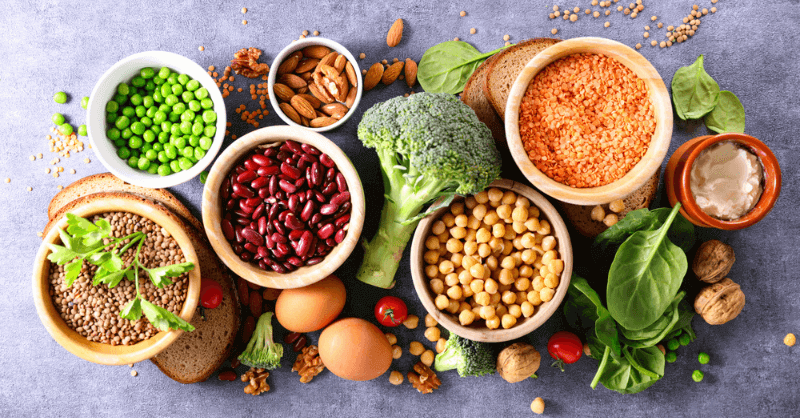Expert Advice Include the 5 Food Groups in your Diet
As we promised here’s the expert advice. Try to implement as many as you can for harmonizing benefits.
A healthy diet has to contain all the 5 major food groups. It’s not hard at all to include healthy foods from the five food groups into snacks and meals. Some suggestions,
Vegetables, legumes and beans
raw or cooked vegetables are a great snack food or incorporated into lunch and dinner. Salad vegetables can be improvised into sandwich filling. Vegetable soup can make for a calm and fulfilling lunch. Stir-fries, patties and curries make nutritious evening meals when centered around vegetables. Raw vegetables like carrot and celery sticks make for a quick snack ‘on the run’
Just keep a box of cut up raw vegetables front and centre in your fridge. It’s sure to catch your eyes when you’re looking for an easy snack. Bean-based dips such as hummus (made from chickpeas) make for a healthy companion with the crunchy veggies.
Fruit
Fruit is your ideal carryon snack and can be included with most meals. Try a banana with your breakfast cereal, an apple before morning tea, and some berries mixed in yogurt for an afternoon snack. Fresh whole fruit is recommended over fruit juice and dried fruit cereal.
Wholegrains
Rice, pasta and noodles are all grains but you need the least processed one to make it healthy. There are tons of varieties. Whole Grain breads and cereals provide more nutrients and fibre, which are essential for a healthy digestion. Check the fibre content for options that have 3 g or more of fibre per serving for the excellent choice.
Lean meats and poultry, fish, eggs, tofu,
Lean meats are the most abundant source of protein. However they contain many other essential amino acids, fatty acids and vitamins. While complete vegetarian diets can try to provide most of the protein requirements they struggle to provide the other nutrients present in meat.
Nuts, seeds
Both provide tons of protein. Instead of adding lean meat to your sandwich have a handful of nuts as a snack. Legumes and beans are also suitable to most meals.
Cut back on occasional foods
Most Australians have foods and drinks prepared outside the home on a regular basis. In 2015–16, Australians were spending around half of their weekly household food budget on foods prepared outside the home (including restaurant meals, takeaway foods and coffee).
Foods sold from takeaway outlets are high in saturated fats, processed sugars, added salt and kilojoules of calories. High consumption may lead to obesity and chronic disease, such as heart disease, stroke, type 2 diabetes, and even cancer.
Restaurant meals and takeaway foods
Most Australians have foods and drinks prepared outside the home on a regular basis. In 2015–16, Australians were spending around half of their weekly household food budget on foods prepared outside the home (including restaurant meals, takeaway foods and coffee).
The foods sold by takeaway outlets are often high in saturated (bad) fat, added sugars, added salt and kilojoules. High consumption may contribute to obesity and chronic disease, such as heart disease and stroke, type 2 diabetes, and some forms of cancer.
Foods and drinks like soft drinks, biscuits, cakes are particularly high in added sugars and high in kilojoules. Unlike the commonly held misconception, sugar itself does not lead to diabetes. However, added sugars can lead to weight gain, and that increases a person’s risk of type 2 diabetes.
Drink alcohol in moderation
It is recommended that healthy people drink no more than two standard drinks on any given day to reduce the lifetime risk of harm from alcohol-related damage or conditions. No more than four standard drinks can be granted on a single occasion due to the risk of alcohol-related injury arising from that occasion.
Less than 5 g of salt per day (even less than a teaspoon) is recommended for adults, considering normal blood pressure. Many consume as much as double this amount daily which is borderline suicidal. Too much salt in the diet is associated with an increased risk of high blood pressure, that is considered a risk factor for heart disease and stroke.
Related:
1. What Foods Can You Freeze? A Complete Guide on Freezing Food
2. Essential Things to Know about Reheating Food in the Oven
3. A Complete Guideline to Healthy Eating Pyramid
4. Healthy Food List: Top 50 Weight-Loss Friendly Foods
It’s not only that these foods are delicious but are nutritious and can be incorporated into daily intake without much concern for side-effects (apart from nuts, be very wary of nuts!). This means you can add 3 items from this list to each week’s grocery list and you’ve got a 45 days meal plan that’s vibrant and exquisite.
Remember to buy local and buy fresh. That’s the best type of food to be very honest. Especially when you consider they contain microbiomes you’re familiar with. Not to mention the snarky zest your home folks add to the food. Sometimes a fresh home cooked meal is all you ever need.



![]() 24 minutes
24 minutes